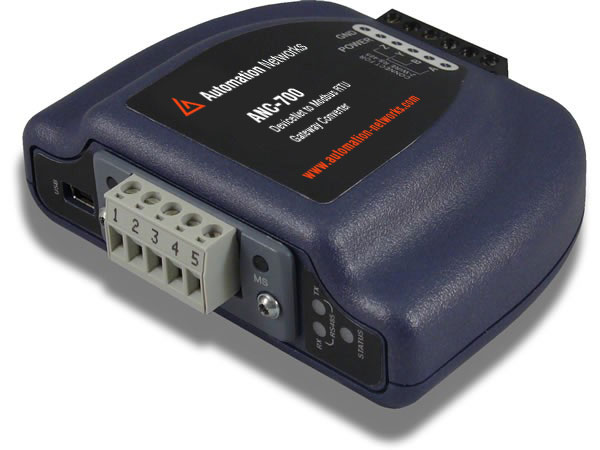Most common protocols with Allen-Bradley factory automation
EtherNet/IP: Ethernet Industrial Protocol is based on standard TCP/IP (IEEE 802.3) and correspondences use existing system foundation. Ethernet physical layer innovation is utilized along TCP and UDP ports (44818 and 2222). Its fundamental leverage originates from the inerrant advancement of physical Ethernet, from 10 Mbits/s to 10/100 Mbits/s to 1 Gbits/s and the sky is the limit from there. EtherNet/IP likewise guarantees Internet and venture network for remote control.
- ControlNet: Built all alone physical and information join layer, ControlNet utilizes a solitary media join with (reasonable) RG-6 coaxial links and transport. It highlights a 5¬Mbits/s speed, transfer/download of information, P2P correspondence, and up to 99 hubs.
- DeviceNet: Uses Controller Area Network (CAN-transport) as a spine for physical and information join layer. CAN-transport comprises of a host processor, a controller, and a handset connected by 2 contorted pair links. Bit rates go from 1 Mbit/s at 40 m to 20 Kbit/s at 1200 m. DeviceNet utilizes the expert/slave mode; it can have up to 64 hubs and the physical system can give energy to the gadgets (with restricted utilization).
Abdominal muscle DH+
The Data Highway Plus (DH+) system is a neighborhood intended to bolster remote programming and informing in the middle of PCs and controllers for production line floor applications.
The Electrical interface utilizes transformer coupled differential signs which corresponds with token passing by means of stations (hub addresses). DH+ works with differential motioning in which 2 wires are utilized to convey information and that information is spoken to by voltage contrasts between the two wires. The information is encoded differentially with the goal that basic clamor to both wires is not took note. The differential signs for the sign Level is around 8-12 volts crest to crest. DH+ Baud Rate incorporate 57.6 Kb, 115.2Kb, and 230.4Kb with Half Duplex transmission.
DH+ topology comprises of trunk lines with drops. This works from blue hose link and at hubs along these link there little drop line (upto 77 hub addresses) that can associate a gadget to the DH+ system.
DH+ MEDIA utilizes Baseband Shielded Twin Axle Cable. Baseband alludes to the way that all gadgets are utilizing a solitary recurrence.
The Automation Networks ANC Gateway Series Converters interfaces mnny serial protocols to DeviceNet
Protocols include:
RS485 Serial Protocols: The ANC-300e Gateway has the flexibility to choose Modbus Master/Slave as well as other RS485 serial protocols which include: Modbus Sniffer, A.O. Smith AIN, A.O. Smith PDNP, BACnet MS/TP Client, BACnet MS/TP Server, TCS Basys Master, MSA Chillgard Monitor, DMX 512-Master, DMX-512 Slave, M-Bus Master, Metasys N2 Master, Metasys N2 Slave, Siemens FLN Master, Siemens FLN Slave, Sullair Master, Toshiba ASD Master, Toshiba PLC Master.
Ethernet Protocols: The ANC-300e Gateway can communicate with the above RS485 protocols to Ethernet; and Ethernet to Ethernet protocols including Ethernet/IP Client/Server, AB CSP Ethernet Client/Server, Modbus TCP/IP, Profinet IO, BACnet/IP BBMD, BACnet/IP Client, BACnet/IP Server, Baumer VeriSens Client, CC-Link IE SLMP Client, MELSEC Client/Server, Generic Socket Client/Server & GreenFumeHood Client.
ANC-700: DEVICENET TO MODBUS RTU GATEWAY CONVERTER

The Automation Networks ANC-700 is a Modbus Master/Slave Gateway to DeviceNet (Slave) which allows information to be transferred seamlessly between DeviceNet and RS-485 networks with minimal configuration requirements. The ANC-200 provides a DeviceNet port (5-conductor pluggable terminal block style) and an RS-485 port (4-wire terminal block style ). The RS-485 port supports multiple protocols. PLC-style logical, arithmetic and filtering database manipulation operations allow the construction of complex autonomous data conditioning functions.
The ANC-200 is part of the ANC Gateway Series product family. The ANC platform is designed to provide a uniform interface, configuration and application experience. This commonality reduces the user’s learning curve, reducing commissioning time while simplifying support.
Automation Networks ANC-700 Modbus RTU to DeviceNet Highlights:
- Configure protocols, network characteristics, and client/server object definitions
- Graphically interact with the internal database in real-time
- Automatically update device firmware.
- Define autonomous internal elements such as database logic and object failsafe values
- Capture, display and save serial network traffic with microsecond-precision timestamps
The ANC-700 incorporates a variety of leading-edge automation technology elements, such as:
- Power can be supplied via the USB cable (for configuration at a workstation) or as a 7-24VDC input on the main terminal block
- Simultaneously supports DeviceNet COS, cyclic, polled and bit-strobed I/O connections
- Explicit messaging access to entire internal database as 8-bit, 16-bit or 32-bit data types
- User-configurable network timeout behaviors
- USB connectivity with virtual COM port support
- 2-wire / 4-wire RS-485 network supports baud rates up to 115.2kbaud
- Desktop, panel/wall and DIN-rail mountable (all hardware included)
- Supports DeviceNet auto baud rate detection
- Controlled by a powerful 32-bit processor
- Supports up to 256 bytes of I/O data in each direction F
Current Networks Supported Include:
- DeviceNet (group 2 server)
- Modbus RTU (master, slave & sniffer)
- BACnet MS/TP (client & server)
- Johnson Controls Metasys® N2 (master & slave)
- Toshiba ASD protocol (master)
- Sullair Supervisor protocol (master)
- DMX-512 (master & slave)
- M-Bus (master)
- Siemens FLN (master & slave)
For more information on automation networks product line please contact us to
www.automation-networks.es
TEL: 281-771-0019
Email: info@automation-networks.es
